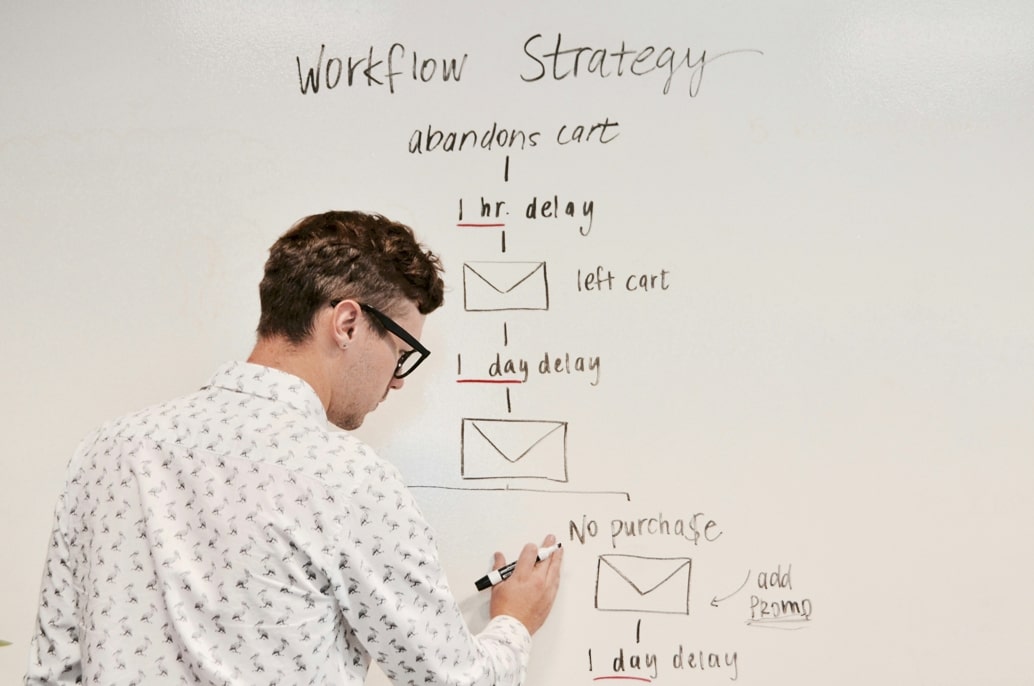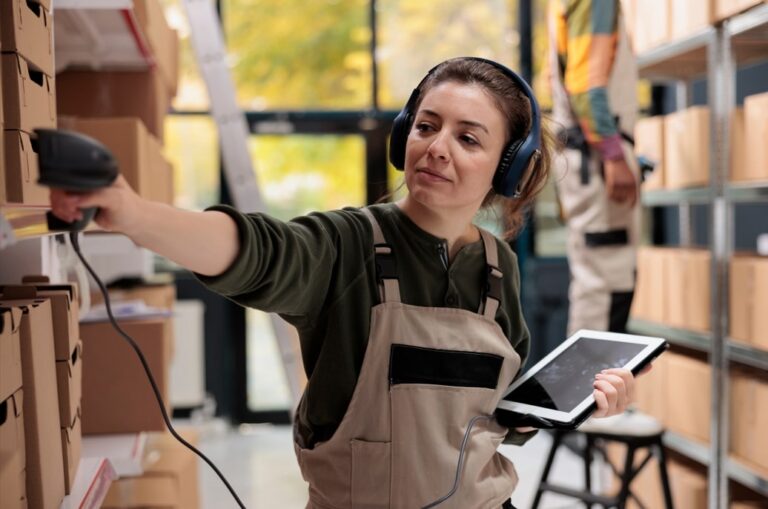The consumer life cycle (CLC) provides a powerful framework for mapping the customer journey, from their first encounter with a brand to becoming a loyal advocate.
By examining each stage of this life cycle, businesses can gain deeper insights into how consumers interact with their offerings and identify opportunities to create lasting connections. Whether you’re running an eCommerce store or a professional service, mastering the consumer life cycle helps you tailor strategies that maximize engagement, satisfaction, and long-term value.
This guide dives into the consumer life cycle, explaining its key stages, why it matters, and how businesses can optimize every touchpoint for sustainable growth.
What is the consumer life cycle?
The consumer life cycle refers to the progression of interactions a consumer has with a brand or product, from initial awareness to long-term advocacy. It maps out every phase of the customer journey, providing businesses with a structured way to understand, engage, and retain their audience.
Core concept

At its heart, the consumer life cycle captures the evolution of a customer’s relationship with a brand. It’s not just about one-time purchases—it’s about nurturing ongoing connections and maximizing the value of every interaction. Each step in this cycle represents a unique opportunity to foster trust, deliver value, and create loyalty.
For example, a potential customer might discover a clothing brand through a social media ad, evaluate its quality via reviews, make their first purchase during a sale, and eventually recommend the brand to their network. This journey embodies the essence of the consumer life cycle.
By defining and analyzing each stage, businesses can identify gaps, refine their approach, and ensure every effort leads to tangible results, such as increased customer lifetime value (CLV).
See SMO in action
Try our solutions with zero commitment
Key stages of the consumer Life cycle
The consumer life cycle is a marketing framework that describes the journey customers go through when interacting with a business, from becoming aware of its products or services to developing loyalty. Understanding each stage helps businesses strategize how to attract, retain, and nurture customers at every step. Below are the key stages of the consumer life cycle in detail:
Awareness
This is the first stage where potential customers become aware of a brand, product, or service. Awareness may arise through advertising, word-of-mouth, social media, or organic online searches.
Why It Matters
If consumers don’t know you exist, they can’t buy from you. Effective branding and targeted campaigns are crucial here.
How It Happens
- Marketing Campaigns: Ads on Google, social media platforms, and offline mediums (like billboards or events).
- Content Marketing: Blogs, videos, and infographics that highlight common pain points solved by the product.
- Influencer Partnerships: Collaborations to tap into existing audiences.
- Word-of-Mouth Referrals: Happy customers spreading the word.
Strategies
- Leverage SEO to improve search visibility.
- Invest in eye-catching ad designs and taglines.
- Create engaging social media profiles that resonate with your target market.
Consideration
At this stage, consumers evaluate whether your product fits their needs. They might compare you to competitors, explore reviews, and analyze pricing options。
Why It Matters
Potential customers often drop off here if they find unclear value propositions, lack of trust signals, or better options elsewhere.
How It Happens
- Comparison Shopping: Consumers review competitors to weigh options.
- Engagement with Reviews: Trust in other users’ opinions builds credibility.
- Exploration of Features: Looking at how well your offering meets their specific needs.
Strategies
- Highlight customer testimonials and success stories.
- Offer a demo, free trial, or sample.
- Simplify comparisons with clear information on pricing, features, and benefits.
- Provide engaging content (like webinars or guides) that answers consumer questions.
Purchase
The consumer makes the decision to buy a product or service. This is the stage where your sales funnel either succeeds or fails.
Why It Matters
A frictionless purchasing experience ensures the consumer completes the transaction without hesitation or second thoughts.
How It Happens
- Impulse Purchases: Motivated by discounts, limited-time offers, or social proof.
- Well-Informed Purchases: Driven by strong research and positive touchpoints.
- Abandoned Carts: Often due to complicated checkout processes or unexpected fees.
Strategies
- Streamline the checkout process with fewer steps.
- Clearly display trust signals, such as secure payment options or guarantees.
- Offer payment flexibility (installments, multiple methods).
- Send cart abandonment emails to recover missed opportunities.
Retention
The focus shifts from gaining new customers to maintaining relationships with existing ones. Satisfied customers are encouraged to make repeat purchases.
Why It Matters
Acquiring new customers is more expensive than retaining current ones. Loyal customers also tend to spend more over time.
How It Happens
- Post-Purchase Experience: Ensuring satisfaction through support and follow-ups.
- Cross-Selling and Upselling: Introducing customers to related or upgraded products.
- Building Trust: Through consistent quality and responsiveness.
Strategies
- Use loyalty programs or rewards.
- Provide excellent customer service with quick response times.
- Send personalized thank-you messages and recommendations.
- Regularly engage through newsletters, offers, or updates.
Advocacy

At this stage, satisfied customers become promoters of your brand. They actively recommend your product or service to others.
Why It Matters
Customer advocates provide free marketing by spreading positive word-of-mouth, building credibility that’s hard to achieve with traditional advertising.
How It Happens
- Spontaneous Advocacy: Passionate customers share their experiences without prompting.
- Encouraged Referrals: Businesses incentivize referrals with discounts or other rewards.
Strategies
- Create shareable moments (social media-friendly content or campaigns).
- Incentivize referrals with perks or discounts for both referrers and new customers.
- Showcase customer stories, testimonials, and use cases.
- Reward loyalty to keep advocates engaged.
The importance of feedback loops
At each stage of the life cycle, businesses benefit from gathering customer feedback. Surveys, reviews, and user data allow continuous refinement of the customer experience
Why the consumer life cycle matters
Understanding and effectively managing the consumer life cycle is crucial for businesses aiming to thrive in today’s competitive landscape. Here’s why the CLC is so important:
Enhances customer engagement at every stage
Each stage of the CLC offers a chance to interact meaningfully with customers. By tailoring your approach based on where a customer is in the life cycle, you can:
- Capture attention during the awareness stage with compelling ads and content.
- Build trust during the consideration stage with clear and transparent information.
- Foster loyalty during retention by delivering personalized experiences.
Engaged customers are more likely to convert, remain loyal, and advocate for your brand.
Maximizes customer lifetime value
The consumer life cycle is directly tied to CLV—the total revenue a business can expect from a single customer. By nurturing customers throughout the life cycle, businesses can:
- Increase repeat purchases.
- Upsell or cross-sell related products.
- Strengthen long-term relationships that drive consistent revenue streams.
A well-managed CLC transforms one-time buyers into lifelong customers, maximizing overall profitability.
Reduces acquisition costs by focusing on retention
Acquiring new customers is significantly more expensive than retaining existing ones. The CLC emphasizes retention strategies—like loyalty programs and post-purchase engagement—that reduce churn and extend the customer journey.
- Loyal customers not only spend more over time but also generate referrals, reducing the need for costly advertising campaigns.
Provides a framework for better decision-making
The CLC offers businesses a roadmap to identify strengths and weaknesses in their marketing and operational strategies. Tracking consumer behavior and performance metrics at each stage helps refine tactics and allocate resources more effectively.
In short, the consumer life cycle is the foundation for sustainable business growth, helping companies build meaningful connections while optimizing resources.
Tools and strategies for managing the consumer life cycle
Effectively managing the CLC requires the right combination of tools and strategies. These empower businesses to track customer interactions, tailor communication, and deliver value at every stage.
CRM systems
Customer Relationship Management (CRM) software is essential for tracking and analyzing customer interactions throughout the life cycle.
- Features to leverage:
- Centralized customer profiles.
- Segmentation for targeted campaigns.
- Automated follow-ups and reminders.
See SMO in action
Try our solutions with zero commitment
Marketing automation tools
Automation platforms streamline repetitive tasks, ensuring consistent engagement.
- Applications:
- Email workflows for nurturing leads and retaining customers.
- Scheduled social media posts to maintain visibility.
- Triggered notifications for abandoned carts or milestones.
Analytics platforms
Measuring the effectiveness of your strategies is vital for optimizing the CLC. Analytics tools provide insights into consumer behavior and campaign performance.
- Key metrics to track:
- Website traffic and conversion rates.
- Retention rates and average purchase frequency.
- Net Promoter Score (NPS) for advocacy measurement.
Personalization and AI-powered tools
Advanced tools powered by AI enable hyper-personalized experiences for consumers.
- Examples:
- Product recommendations based on browsing history.
- Chatbots for instant, tailored support.
- Predictive analytics to anticipate customer needs.
Loyalty and referral programs
Retention and advocacy are pivotal in the latter stages of the CLC. Loyalty programs incentivize repeat purchases, while referral programs encourage word-of-mouth marketing.
Feedback collection tools
Understanding customer sentiments and experiences helps fine-tune strategies for all stages of the CLC. Use tools like:
- Surveys (SurveyMonkey, Typeform) for gathering post-purchase insights.
- Review platforms for gauging customer satisfaction.
By leveraging these tools and strategies, businesses can optimize every stage of the consumer life cycle, ensuring seamless experiences and building stronger connections with their audience.
Common challenges in managing the consumer life cycle

Effectively managing the consumer life cycle is a powerful strategy, but it comes with its fair share of challenges. Identifying and addressing these challenges ensures a seamless customer journey and sustained growth.
Data silos and lack of integration
When customer data is scattered across multiple platforms, it’s difficult to get a holistic view of the consumer journey. This leads to disconnected experiences and inefficient decision-making.
- Solution: Centralize your data through integrated tools like a CRM system that connects with your marketing, sales, and customer service platforms.
Inconsistent messaging across touchpoints
Customers expect a consistent brand experience, regardless of the channel. Misaligned messaging across platforms like email, social media, and in-store interactions can confuse and alienate consumers.
- Solution: Develop a cohesive communication strategy and ensure all departments (marketing, sales, customer support) adhere to unified messaging.
Overlooking post-purchase engagement
Many businesses focus heavily on acquiring customers but neglect the retention and advocacy stages of the life cycle. This leads to higher churn rates and missed revenue opportunities.
- Solution: Invest in retention strategies like personalized follow-ups, loyalty programs, and excellent post-purchase customer service.
Poor understanding of consumer needs
Failing to understand what customers want at different stages can result in irrelevant marketing efforts and reduced engagement.
- Solution: Use analytics and feedback tools to continuously gather insights about your audience. Adjust your strategies to align with their preferences and pain points.
Lack of alignment between departments
When teams like marketing, sales, and customer success don’t work together, the customer experience suffers. Miscommunication or conflicting priorities can disrupt the flow of the CLC.
- Solution: Encourage cross-departmental collaboration with shared goals and regular meetings to discuss customer life cycle strategies.
Conclusion
The consumer life cycle is a valuable framework for understanding and optimizing the customer journey from start to finish. By addressing each stage—awareness, consideration, purchase, retention, and advocacy—businesses can build meaningful relationships with their customers and unlock long-term growth.
Managing the consumer life cycle effectively requires a deep understanding of customer needs, the right tools, and the flexibility to adapt strategies as necessary. Challenges like data silos, inconsistent messaging, and post-purchase neglect can hinder success, but with the right solutions, these obstacles can be overcome.
By focusing on creating value at every touchpoint, businesses not only enhance customer experiences but also strengthen loyalty, maximize customer lifetime value, and stay ahead in competitive markets. The CLC isn’t just a concept; it’s a path to sustainable success.


